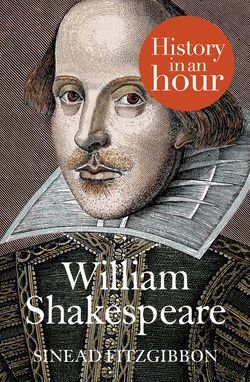Читать книгу William Shakespeare: History in an Hour - Sinead Fitzgibbon - Страница 7
The Family Years
ОглавлениеWhen we next meet William Shakespeare, he is 18 years old and (presumably) in love. It is November 1582, and he has travelled the thirty miles to the town of Worcester to apply for a marriage licence. The register lists his intended bride as one Anne Whateley, a detail which has caused no small confusion among historians, because the wife he ended up with was called Anne Hathaway. This discrepancy probably should not necessarily be taken as proof that William was fickle in his affections, casting off one Anne in favour of another in a matter of weeks. The far more likely explanation is that the clerk at Worcester simply made an error while recording the bride’s surname.
The (probably incorrect) entry in the Worcester register
The next reference to the impending nuptials can be found in the marriage bond, in which Anne Hathaway now appears correctly as herself. The existence of this document is particularly interesting. Usually, weddings could only take place after the marriage banns were read aloud at the local church on each of the three preceding Sundays. This practice allowed time for interested parties to raise objections should they have any. But a marriage bond, usually issued by the bishop and at considerable cost to the applicant, granted permission for a couple to by-pass this convoluted process and marry as soon as they wished. Given that Shakespeare paid £40 to receive this licence, it would seem that he was in quite a hurry to get himself wed. Sure enough, the nuptials took place that same month after just one reading of the banns. Six months later, Anne gave birth to the couple’s first child, a daughter called Susanna.
There has been much speculation about the nature of Shakespeare’s marriage to Anne Hathaway. It has often been attested that Shakespeare was, on account of Anne’s pregnancy, forced to marry against his will, and that the union was therefore an unhappy one. Anne’s age – at 26 she was a full eight years her husband’s senior – is also seen as significant by those who believe that the young Shakespeare was coerced into matrimony by an older woman, desperate to avoid a life of spinsterhood. Some 20 per cent of women in Elizabethan England would go to their graves without marrying, so such a proportion would have intensified competition for men. On the other hand, this also means that a 26-year-old single woman would not have been rare or any great social shame. In any case, while such an age difference was unusual for the time, neither was it unheard of.
In reality, the only thing we can know for certain about the workings of the Shakespeare–Hathaway marriage is that we know nothing for certain. While their parents appear to have been acquaintances since the 1550s, we do not know how long the couple had known each other, or if they had had a longer engagement than their hurried marriage seems to suggest. Neither do we know anything about the dispositions and personalities of husband and wife, nor have we any insight into their attitude to the institution of marriage. And while the fact that Shakespeare would ultimately spend much of their married life living and working in London is indicative of a certain mutual independence, it should not necessarily be taken as evidence of an emotional estrangement. At any rate, relations must have continued to some degree in the first years of their marriage as, in late January or early February 1585, Anne gave birth to twins, Judith and Hamnet.
